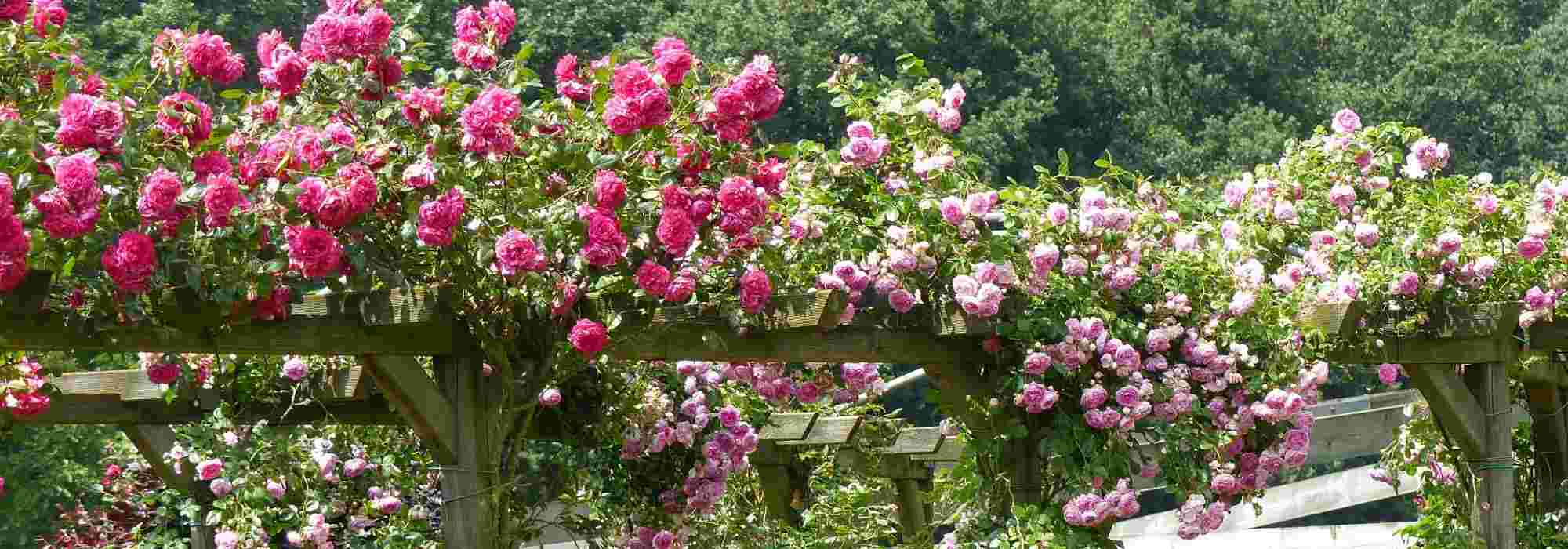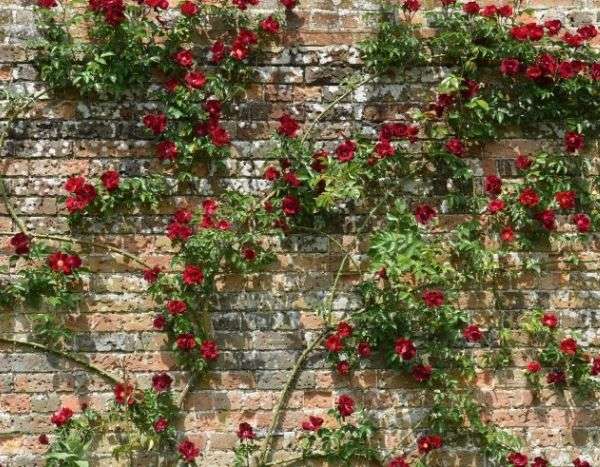

Rosa 'Roi de Siam' - Climbing Rose


Rosa 'Roi de Siam' - Climbing Rose
View more pictures
Hide images

Thierry P.

N/A
Thierry P. • 84 FR
Rosa 'Roi de Siam' - Climbing Rose
Rosa Roi de Siam
Rose
Quite disappointed with the young plant itself. Not with the packaging. The Siam rose is ultimately small (20cm (8in) max), with branches broken in the box, very small diameter of the shoots, the plant was probably barely potted before shipping as the roots weren't even in contact with the soil in the pot... The plant feels really fragile, it was systematically pruned at the nodes from last year, but the young shoots were also pruned! Makes you wonder how it will recover, apart from the grafting stock (!).... I don't have high hopes for its vigor. So for €25 plus shipping, I find it to be a steep price and bordering on false advertising. Please forgive my frankness.. Texte révisé : Quite disappointed with the young plant itself. Not with the packaging. The Siam rose is ultimately small (20cm (8in) max), with branches broken in the box, very small diameter of the shoots, the plant was probably barely potted before shipping as the roots weren't even in contact with the soil in the pot... The plant feels really fragile, it was systematically pruned at the nodes from last year, but the young shoots were also pruned! Makes you wonder how it will recover, apart from the grafting stock (!).... I don't have high hopes for its vigour. So for £25 plus shipping, I find it to be a steep price and bordering on false advertising. Please forgive my frankness.
Xavier, 30/05/2023
Special offer!
Receive a €20 voucher for any order over €90 (excluding delivery costs, credit notes, and plastic-free options)!
1- Add your favorite plants to your cart.
2- Once you have reached €90, confirm your order (you can even choose the delivery date!).
3- As soon as your order is shipped, you will receive an email containing your voucher code, valid for 3 months (90 days).
Your voucher is unique and can only be used once, for any order with a minimum value of €20, excluding delivery costs.
Can be combined with other current offers, non-divisible and non-refundable.
Home or relay delivery (depending on size and destination)
Schedule delivery date,
and select date in basket
We guarantee the quality of our plants for a full growing cycle, and will replace at our expense any plant that fails to recover under normal climatic and planting conditions.
Description
The climbing rose 'Roi de Siam' is a very ancient repeat-flowering hybrid tea rose, little known in the horticultural trade. Beyond its great elegance, it is one of the most powerfully scented red roses. Its large, sumptuous, turbinated roses are heavy with petals that release a heady scent of old-fashioned roses depending on the time and weather. From bud to fully mature flower, they are superb at all stages of their blooming, their colour ranging from madder red to pure carmine. This variety, which does not grow large, will benefit from planting in groups of 2 or 3. Provide it with a semi-shaded position protected from strong winds and heavy frosts.
The 'Roi de Siam' rose is part of the complex family of hybrid teas, closely related to historical tea roses, which are not very hardy, generally have a climbing habit, and are not tolerant of severe pruning. It was created by the French rose breeder Barbier for Laffay and dates back to before 1825. It is a sarmentous rose with a narrow, slightly rigid habit and vigorous, sparsely thorny stems that reach 3 to 4 metres (10 to 13 feet) in height and 1 to 2 metres (3 to 7 feet) in spread, depending on growing conditions. Its moderate growth rate and dark green, matte, deciduous foliage is quite resistant to diseases such as blackspot and powdery mildew. Depending on the climate, it may be necessary to treat it preventively. It is distinguished by the sweet scent of its large roses. Measuring 9-10 cm (4in) in diameter, they are full, heavy, slightly trailing, grouped in small clusters of astonishing carmine red. While its summer flowering is dazzling, the repeat flowering depends on the care given to the plant, particularly the freshness and fertility of the soil.
'Roi de Siam' is an elegant and sparsely thorny rose that should be planted near the house or a window to enjoy its exceptional fragrance. Choose a sheltered and warm location, showcase it on a small stake or a column, trained on an arch near the terrace, or even in a small garden. It is incomparable for giving a touch of theatricality to romantic borders. It pairs well with the mauve roses of Blue Girl, Claude Brasseur or Sissi, or the white corollas of the English rose 'Winchester Cathedral'. It is an ideal companion for flowering shrubs (buddleias, mock oranges, lilacs) and perennials such as campanulas, Nepeta, perennial salvias, and foxgloves, adding tremendous charm.
Rosa 'Roi de Siam' - Climbing Rose in pictures




Plant habit
Flowering
Foliage
Botanical data
Rosa
Roi de Siam
Rosaceae
Rose
Cultivar or hybrid
Rosa canina Laxa (Wrapped bare root, 4L/5L pot)
Planting and care
The climbing rose 'Roi de Siam' prefers semi-shaded or gently sunny environments, with mild climates and fertile soils. It is important to treat it preventively against rose diseases and to regularly water and fertilise it to support autumn regrowth. When planting your rose in a pot, ensure the soil is well-worked and add an amendment like blood, fish and bone at the bottom of the planting hole. After planting, water abundantly to remove air pockets. In dry weather, you should water it regularly for a few weeks to facilitate rooting. For beautiful flowering, train the branches as horizontally as possible.
Pruning of perpetual roses should be done at the end of winter. While it is okay to shorten the size if it bothers you, do not cut it back too much as it would harm the flowering. However, do not hesitate to thin out the branches by removing dead wood and unsightly branches. Removing faded flowers throughout the summer promotes even more abundant flowering.
It is common for roses to get stained or look ugly at the end of summer, but this is not harmful to their development. These stains are a natural phenomenon and do not pose a problem to the rose.
Planting period
Intended location
Care
Planting & care advice
-
, onOrder confirmed
Reply from on Promesse de fleurs
Similar products
Haven't found what you were looking for?
Hardiness is the lowest winter temperature a plant can endure without suffering serious damage or even dying. However, hardiness is affected by location (a sheltered area, such as a patio), protection (winter cover) and soil type (hardiness is improved by well-drained soil).

Photo Sharing Terms & Conditions
In order to encourage gardeners to interact and share their experiences, Promesse de fleurs offers various media enabling content to be uploaded onto its Site - in particular via the ‘Photo sharing’ module.
The User agrees to refrain from:
- Posting any content that is illegal, prejudicial, insulting, racist, inciteful to hatred, revisionist, contrary to public decency, that infringes on privacy or on the privacy rights of third parties, in particular the publicity rights of persons and goods, intellectual property rights, or the right to privacy.
- Submitting content on behalf of a third party;
- Impersonate the identity of a third party and/or publish any personal information about a third party;
In general, the User undertakes to refrain from any unethical behaviour.
All Content (in particular text, comments, files, images, photos, videos, creative works, etc.), which may be subject to property or intellectual property rights, image or other private rights, shall remain the property of the User, subject to the limited rights granted by the terms of the licence granted by Promesse de fleurs as stated below. Users are at liberty to publish or not to publish such Content on the Site, notably via the ‘Photo Sharing’ facility, and accept that this Content shall be made public and freely accessible, notably on the Internet.
Users further acknowledge, undertake to have ,and guarantee that they hold all necessary rights and permissions to publish such material on the Site, in particular with regard to the legislation in force pertaining to any privacy, property, intellectual property, image, or contractual rights, or rights of any other nature. By publishing such Content on the Site, Users acknowledge accepting full liability as publishers of the Content within the meaning of the law, and grant Promesse de fleurs, free of charge, an inclusive, worldwide licence for the said Content for the entire duration of its publication, including all reproduction, representation, up/downloading, displaying, performing, transmission, and storage rights.
Users also grant permission for their name to be linked to the Content and accept that this link may not always be made available.
By engaging in posting material, Users consent to their Content becoming automatically accessible on the Internet, in particular on other sites and/or blogs and/or web pages of the Promesse de fleurs site, including in particular social pages and the Promesse de fleurs catalogue.
Users may secure the removal of entrusted content free of charge by issuing a simple request via our contact form.
The flowering period indicated on our website applies to countries and regions located in USDA zone 8 (France, the United Kingdom, Ireland, the Netherlands, etc.)
It will vary according to where you live:
- In zones 9 to 10 (Italy, Spain, Greece, etc.), flowering will occur about 2 to 4 weeks earlier.
- In zones 6 to 7 (Germany, Poland, Slovenia, and lower mountainous regions), flowering will be delayed by 2 to 3 weeks.
- In zone 5 (Central Europe, Scandinavia), blooming will be delayed by 3 to 5 weeks.
In temperate climates, pruning of spring-flowering shrubs (forsythia, spireas, etc.) should be done just after flowering.
Pruning of summer-flowering shrubs (Indian Lilac, Perovskia, etc.) can be done in winter or spring.
In cold regions as well as with frost-sensitive plants, avoid pruning too early when severe frosts may still occur.
The planting period indicated on our website applies to countries and regions located in USDA zone 8 (France, United Kingdom, Ireland, Netherlands).
It will vary according to where you live:
- In Mediterranean zones (Marseille, Madrid, Milan, etc.), autumn and winter are the best planting periods.
- In continental zones (Strasbourg, Munich, Vienna, etc.), delay planting by 2 to 3 weeks in spring and bring it forward by 2 to 4 weeks in autumn.
- In mountainous regions (the Alps, Pyrenees, Carpathians, etc.), it is best to plant in late spring (May-June) or late summer (August-September).
The harvesting period indicated on our website applies to countries and regions in USDA zone 8 (France, England, Ireland, the Netherlands).
In colder areas (Scandinavia, Poland, Austria...) fruit and vegetable harvests are likely to be delayed by 3-4 weeks.
In warmer areas (Italy, Spain, Greece, etc.), harvesting will probably take place earlier, depending on weather conditions.
The sowing periods indicated on our website apply to countries and regions within USDA Zone 8 (France, UK, Ireland, Netherlands).
In colder areas (Scandinavia, Poland, Austria...), delay any outdoor sowing by 3-4 weeks, or sow under glass.
In warmer climes (Italy, Spain, Greece, etc.), bring outdoor sowing forward by a few weeks.

















































